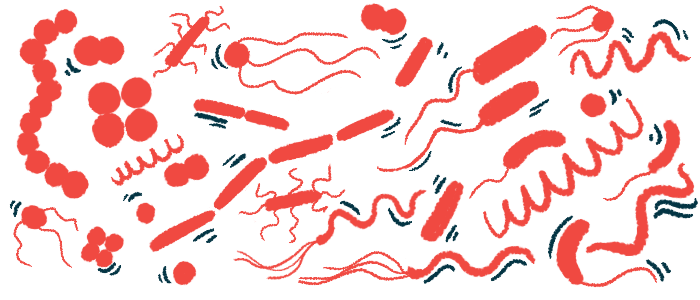‘Therapeutic challenge’ reported in woman with rare secondary CAD
After being treated for tuberculosis, immunosuppressants triggered another viral infection
Written by |

Two infections complicated the case of a woman who had cold agglutinin disease (CAD) secondary to a rare autoimmune disorder called mixed connective tissue disease (MCTD).
The woman was treated for a tuberculosis (TB) lung infection, after which immunosuppressant therapies for CAD and MCTD triggered a second viral infection, according to the authors of the case report “Uncovering the Unusual: A Case of Mixed Connective Tissue Disease With Rare Presentation, Atypical Complications, and Therapeutic Dilemmas,” which was published in the Cureus Journal of Medical Science.
“MCTD with [CAD] is treated with steroids and immunosuppressants,” the researchers wrote, “but we had a therapeutic challenge due to the presence of TB.”
CAD is a type of autoimmune hemolytic anemia (AIHA), a group of conditions marked by abnormal immune attacks that destroy red blood cells. It features the presence of cold agglutinins, self-targeting antibodies that bind to red blood cells at low temperatures, causing them to clump together and be marked for destruction (hemolysis).
The attacks result in too few red blood cells (anemia) and poor oxygen transport throughout the body, bringing about symptoms such as fatigue and pain.
The autoimmune condition is classified as either primary, occurring in the absence of another condition, or secondary, where it’s associated with infections, certain cancers, or other autoimmune disorders.
AIHA is estimated to occur in 5-10% of people with connective tissue diseases, conditions that affect the tissue that gives structure to other tissues and organs in the body.
Mixed connective tissue disease (MCTD) is a rare disorder with features commonly seen in three autoimmune diseases — lupus, scleroderma, and polymyositis (muscle inflammation). It’s diagnosed with a positive test for antibodies against an RNA-protein complex called U1RNP.
Early signs typically involve Raynaud’s syndrome, wherein blood vessels, mainly in the fingers and toes, constrict at cold temperatures, leading to skin discoloration and numbness or tingling. Thereafter, patients may have joint pain, muscle weakness, and lung, heart, and kidney involvement.
Immunosuppressant therapies lead to second viral infection
“AIHA as an initial presentation of MCTD is very rare,” wrote researchers in India who described the case of a 46-year-old woman with MCTD-associated CAD that was complicated by infections.
The woman complained of fatigue, shortness of breath, a dry cough lasting 15 days, and reported a history of low-grade fever.
She had been successfully treated for genital tuberculosis, an infection caused by the Mycobacterium tuberculosis bacterium that generally affects the lungs. It can also affect other body parts, such as the genitals.
On examination, her skin was severely pale with a yellow tinge, and wheezing and crackling were heard in both lungs. Blood tests revealed below-normal levels of hemoglobin, the protein in red blood cells that carries oxygen.
There were also signs of ongoing hemolysis, including an elevated count of immature red blood cells and high levels of bilirubin and lactic dehydrogenase, two molecules released when red blood cells are destroyed. Her hemoglobin levels declined even further in two days, with a gradual decrease in red and white blood cells and platelets.
Blood smears showed red blood cell clumps, a sign of CAD, and a Coombs test was positive for cold agglutinins, confirming CAD.
Additional autoimmune blood tests showed the presence of anti-U1RNP antibodies, specific for MCTD, and other self-reactive antibodies commonly found with autoimmune disorders.
Besides CAD — a rare presentation with MCTD — the woman showed no other symptoms of the connective tissue disease. Another “atypical manifestation” of MCTD, the team wrote, was lung TB, which was detected through an X-ray and treated according to tuberculosis guidelines. She also received blood transfusions for CAD.
While her symptoms generally improved, hemolysis persisted and 15 days after starting TB treatment, the woman was started on immunosuppressive therapies, including steroids and azathioprine, the dose of which was subsequently increased due to hemolysis continuing. Her hemoglobin levels rose and she began feeling better.
A month later, the woman’s vision became blurry. This was later found to be caused by cytomegalovirus retinitis, a serious infection of one of the eye’s layers caused by a cytomegalovirus.
She began antiviral treatments; her steroid dose was cut to half and azathioprine was discontinued.
“This case report highlights an important association between two autoimmune diseases (MCTD and AIHA), an underlying infection (pulmonary TB), and an acquired opportunistic infection (cytomegalovirus retinitis), probably heralded by immunosuppression,” the researchers wrote.
“AIHA can be the initial presentation of MCTD or a rare complication of TB,” they said, noting the importance of having “a high index of suspicion for the diagnosis of AIHA and its cause.” The researchers also said it is important to “monitor and diagnose serious infections” when treating with an immunosuppressants.





